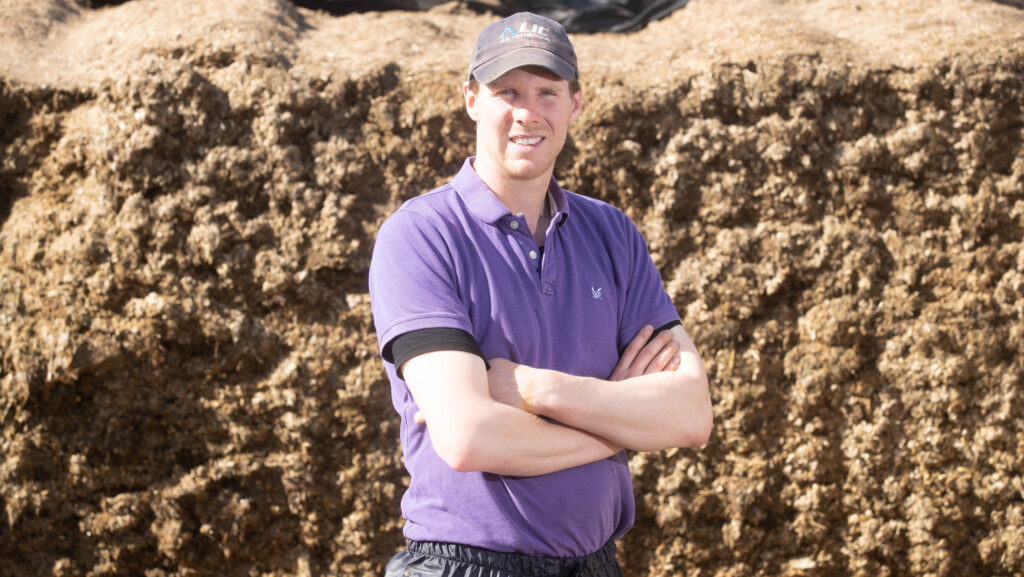Farmer Focus: Hoping two changes help for easy calving
 Jonathan Hughes © Tim Scrivener
Jonathan Hughes © Tim Scrivener We’re almost two weeks into calving, with 200 head calved. As always, we had a glut of heifers to begin with, which is a nice start. What followed was the usual parlour training shenanigans associated with milking heifers.
Overall we’ve coped well, with the help of a few good vet students who will be here throughout calving on two-weekly rotations. This is so they can gain experience.
See also: How £2.5m dairy unit is improving dry cow management
Over the past few seasons, we’ve changed our practices to improve transitional management for the “close-up dry” herd (20-30 days pre-calving group).
We still strip-graze on standing hay (high-fibre paddock grass left to mature since mid-June), but what we’ve changed is bringing in the cows daily.
We teat-spray with iodine to aid udder health, followed by feeding 1.5kg of protein and 2kg of dry matter a head of wholecrop, alongside some minerals.
This is obviously time-consuming, but not only has it benefited the team, as calvings are easier, it’s also improved colostrum quality. This has a knock-on effect on the vigour of the youngstock.
Two years ago, we faced mastitis issues with infected heifers pre-parturition.
Obviously on an organic milk contract when you are audited strictly on antibiotics use and 10% of heifers calve in with mastitis, you must question protocols to assure everything is being done to avoid infection.
It became apparent, due to the hot weather experienced in 2022, that the groups of dry stock would huddle and soil small areas of the paddock very quickly.
This was a breeding site for bacteria. In addition, flies were carriers of disease and there was a noticeable increase in teat warts.
To combat this, for this season and last we have teat-sealed all the heifers 40 days before the start of calving to act as a physical barrier to any infection.
Likewise, for all the dry stock groups and youngstock, applying Stockholm tar to the udder area at six-weekly intervals has reduced the spread of teat warts.
Last year, the mastitis rate of heifers coming into the herd dropped to 2% of infections from the dry period, which we were happy with, considering the wet calving season we experienced.

